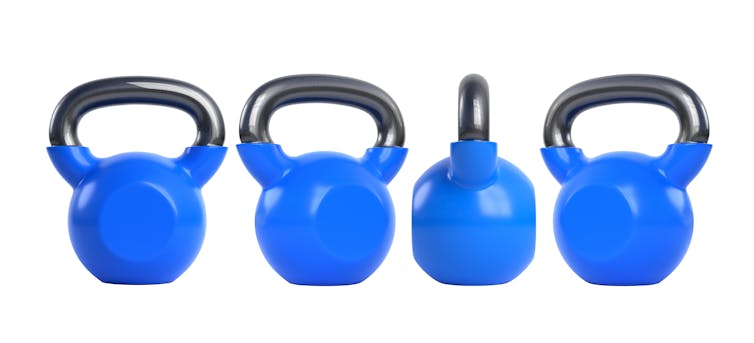
Caroline Pukall, Queen's University, Ontario
What are blue balls? Most people — health-care providers included — are familiar with this term referring to scrotal discomfort experienced in response to prolonged sexual arousal without orgasm.
Although no one knows how the pain of blue balls develops, most implicate the slowed drainage of blood from the testicles in the absence of orgasm during sexual arousal.
One of the key physiological aspects of sexual arousal is increased blood flow to areas of the body, including the genitals. Genital-based signs of sexual arousal include engorgement of the genital structures leading to erection of the penis and external clitoris, and this engorgement usually resolves quickly after orgasm, which acts like a fast release valve.
In the absence of orgasm, the increased blood flow can take longer to get back to a non-aroused state (think of a slow-release valve), which is hypothesized to result in discomfort or pain in some people. In addition, the genitals may take on a blue hue due to the lingering presence of deoxygenated blood under the skin, hence the adjective “blue” in “blue balls.”
Even though most people have heard about “blue balls” and a quick internet search reveals links to a variety of health-related and popular websites containing basic information, there is surprisingly little research on this phenomenon in medical journals. Is this because the experience of blue balls is “no big deal?”
Anyone can get ‘blue balls’

My research team and I paired up with the Science Vs podcast team Wendy Zukerman and Blythe Terrell to analyze the results of a survey they conducted in 2021 examining who experiences discomfort during sexual arousal without orgasm.
The survey also asked about consequences of this experience in terms of frequency and level of discomfort, as well as whether respondents had been asked to continue sexual activity by a sexual partner who may have experienced this.
The results, featuring responses from more than 2,000 participants (about 57 per cent with a penis and 43 per cent with a vagina) and published in Sexual Medicine, revealed that in some ways, this experience is “no big deal” and in other ways, it is a very big deal.
Let’s first clarify a major issue assumed by the term “blue balls” related to who can experience this phenomenon, based on the results of this study.
The term assumes that discomfort resulting from sexual arousal without orgasm only exists in “balls,” referring to the scrotum. The process of sexual arousal described earlier, however, isn’t specific to genitals featuring a scrotum. It occurs in all bodies, as long as there are no obstacles (for example, health conditions impacting blood flow) to physiological sexual response.
In line with this, our results show that just over 42 per cent of participants with a vulva reported experiencing discomfort resulting from sexual arousal without orgasm. Fifty-six per cent of respondents with a penis reported this experience.
Also, the discomfort and pain experiences were overall mild and infrequent. This is consistent with the lack of medical research and clinical attention to this topic.
Concerns about coercion
Respondents’ reports of consequences of being with a partner who experienced or feared experiencing pain without orgasm, however, were extremely concerning. Significantly more participants with a vagina (40.1 per cent) than with a penis (3.7 per cent) reported pressure to engage sexually in this situation.

Pressure to engage in sexual activity is sexual coercion, which is associated with negative outcomes in terms of health and well-being, such as increased risk of depression and anxiety, low self-esteem and negative sexual self-perceptions. Sexual activity in response to coercion certainly does not conform to enthusiastic and freely given sexual consent.
A recent discussion about sexual coercion in response to “blue balls” gained much attention in response to a TikTok, which has since been deleted. This TikTok claimed that “blue balls” are not painful and that men use it as a ruse to convince partners to engage sexually with them. This resulted in an uproar, with angry comments posted by those who recounted experiences of continuing sexual activity out of guilt to prevent their partner’s pain.
In our study, many participants reported in their own words that the experience of pain without orgasm should never be used as a coercive tactic. Yet, results also showed that almost half the participants — mostly women and some men — reported pressure to engage sexually.
Gendered expectations
It will take effort to change ideas related to sexual expectations in our society, many of which are gendered.
The traditional sexual script — guidelines for “appropriate” sexual behaviour in heterosexual couples (for example, the “steps” to sexual intercourse, such as kissing and genital touching) — emphasizes heterosexual men’s pleasure. The orgasm gap, defined as the higher orgasm frequency in heterosexual men as compared to heterosexual women during partnered sexual activity, is only one example of the real-life manifestation of this privileging of men’s sexual pleasure.
Sexual coercion in response to pain due to sexual activity without orgasm, is another example. Also note that this has been shown to occur in men who have sex with men.
Sexual coercion includes actions like begging, pleading, and making someone feel guilty about the pain or that it is their fault that the pain is there (for example, calling someone a “tease”). Our research has found that plenty of things can help with the pain that does not involve coercion, including masturbation, waiting it out, cold or heat application and engaging in nonsexual activities such as exercising, sleeping or studying.
It’s time to take the management of this pain into your own hands, so to speak, as it will pass, and it is not a valid excuse to implicate unwilling others in its resolution.![]()
Caroline Pukall, Professor, Department of Psychology, Queen's University, Ontario
This article is republished from The Conversation under a Creative Commons license. Read the original article.

